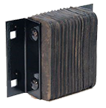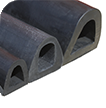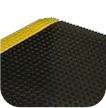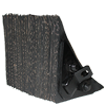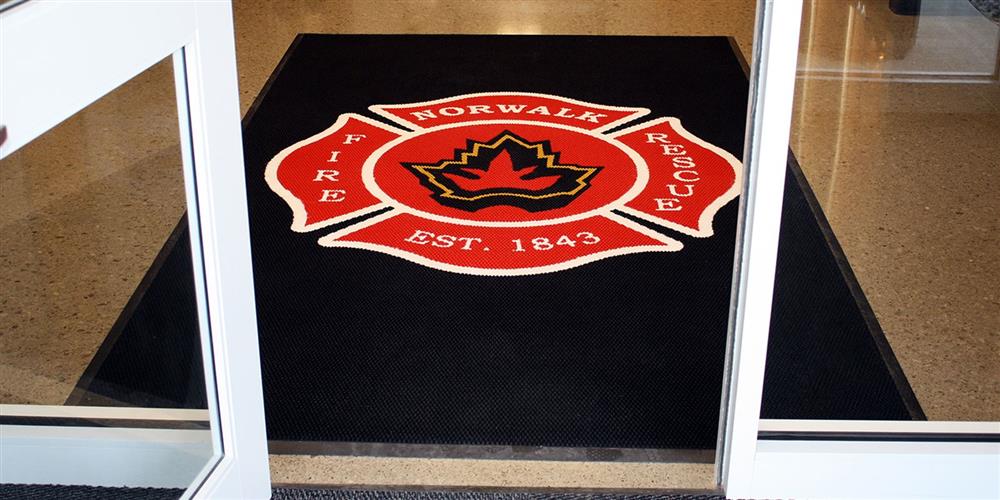
Discovering the right commercial entry matting for your operation is important to improving the cleanliness and safety of your facility. A dirty mat, however, is ineffective at protecting your floors and leaves a bad first impression in the minds of potential customers. Regular mat maintenance and cleaning are essential to keep your entrance matting clean and functional.
Fortunately, it’s not difficult to keep your entrance matting clean with regular upkeep – reducing the potential of slips and ensuring your interior spaces stay fresh and clean. Let’s break down how to properly clean your entrance matting and tips for regular maintenance.
How to Clean Commercial Floor Mats
Regular Maintenance
The first step to keeping your entry mats clean is an easy one: regular vacuuming. Quality entrance mats can hide and hold dirt well, so frequent vacuuming is essential to avoid the excessive build-up of dirt in your entryway. It’s surprising just how much dirt is brought into your facility on a daily basis. Regular vacuuming is not only a surefire way to keep your entrance clean, but it also helps improve the longevity of your entry matting.
The frequency of vacuuming will be determined by your daily foot traffic. A primary entrance to an office building or factory should be vacuumed daily or several times a day to avoid any buildup, whereas a secondary entrance or backdoor that experiences far less traffic can be vacuumed once or twice a week to stay in good shape.
On top of regular vacuuming, you should keep an eye out for potential staining – spot cleaning as soon as possible to prevent any permanent damage. Follow the deep cleaning instructions below to quickly clean up stains as they appear.
Deep Cleaning
While regular maintenance is essential to the upkeep and cleanliness of your entrance matting, occasional deep cleaning is equally important in keeping your entrance in good shape. Deep cleaning with hot water extraction should be done quarterly or monthly, depending on your foot traffic volume. Before you get started, you should make sure you have the right tools for the job. Our recommended cleaning tools include:
- Wet/dry vacuum cleaner
- Heavy-duty floor cleaner/neutralizer
- Trigger sprayer with nozzle attachment
- Carpet extractor with rinse
- Safety equipment (gloves and googles)
Step 1: Remove Mats and Clean the Floor Underneath
The first step to deep cleaning your entrance mat is to remove it from your entryway to a separate cleaning station. Make sure to roll the mat inward with the edges pointed up when lifting the rug to avoid spilling any dirt. For heavy mats, consider having two or more people remove the mat to avoid injury. Once removed, return to the entryway to vacuum and mop the floor where the rug was previously placed. You want to make sure this area is free of dirt and debris when returning your mat to avoid any mat shifting once your rug is returned.
Step 2: Shake Out Mats
Commercial entry mats tend to collect dirt and debris within their fibers and water dams. To properly clean your entrance mat, make sure to loosen and remove the trapped dirt first by shaking the mat out. We recommend doing this outside of your facility, away from the entrance to avoid the risk of customers bringing the removed dirt right back into your entrance.
Step 3: Vacuum Mats
Next, you will want to remove any stubborn and embedded dirt by vacuuming your entry mats. Depending on weather conditions, you can use a traditional vacuum with a brush roller to pick up the dirt from your mat, however, during rainy and snowy months, you might need a wet/dry vacuum to get the water, dirt, and debris from the matting.
Step 4: Clean Mats with a Carpet Extractor
Your entrance matting will need to be cleaned with a carpet extractor to remove any deeply embedded stains, soil, and dirt. This process is essential if your mats have embedded soils and stains that aren’t removed during your daily cleaning. Before cleaning your mats using a carpet extractor, make sure that mats have been thoroughly vacuumed to remove any excess dirt and debris from the surface of the mat.
When extracting your mats, use a trigger sprayer with a nozzle to apply heavy-duty carpet cleaner at the proper dilution. Check the product label for the correct dilution ratio. Most common heavy-duty cleaners need a ratio of 1oz cleaner to 1 gallon of water. Once the mat has been thoroughly sprayed with the appropriate cleaning chemical, let the solution saturate the carpet for several minutes to penetrate the settled stains and soil. After the solution has settled, use a carpet extractor that has been filled with water and an extraction rinse to finish cleaning the mat.
Step 5: Dry and Return Mats
Before putting your mats back down on the floor, make sure that both your mats and your floors are fully dried. You can either let them air dry or use an air mover to speed up the drying process. It’s important to make sure your mats are dry as putting wet mats down too early can lead to an increase in stains and soil build-up. You also run the risk of bacteria growth which can increase the risk of mold, mildew, and odors that will require your mats to be cleaned more frequently.
Make a Great First Impression
Your entryway is your first chance to impress your guests, customers, and visitors. The right entrance matting is important to setting the tone of your company while keeping your facility clean and slip-free. It’s critical that you make a great first impression with a clean, welcoming entry to your facility – so regular maintenance and upkeep is essential.
A proper cleaning routine is only as good as the mats you’re cleaning. Durable Corp has been producing industry-leading rubber dock bumpers and mats for over 100 years. Our goal is to provide high-quality recycled rubber products with unmatched customer service. If you’re looking for a trusted matting partner who prioritizes quality and service, give us a call at 1(800) 537-1603 or contact us online to find the right matting solution for your application.
 Dealer Log In
Dealer Log In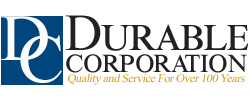
 1.800.537.1603
1.800.537.1603